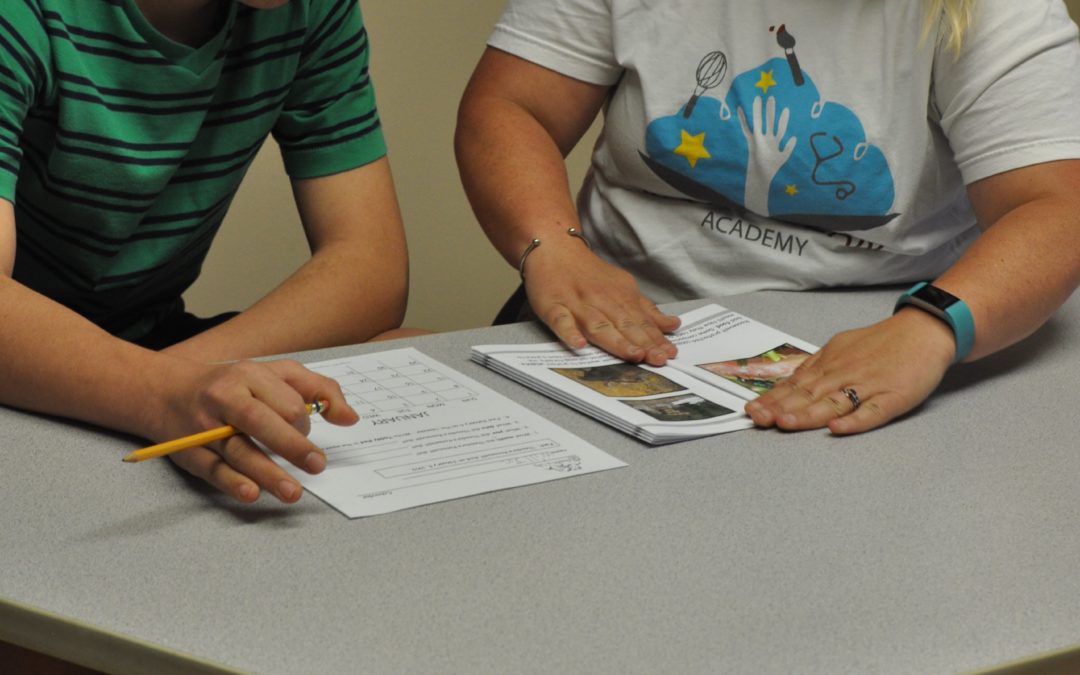A benefit for parents and teachers during the COVID-19 remote learning era has been the opportunity to give individual students more of our undivided attention, along with an opportunity for parents and teachers to collaborate more closely to better educate students. Parents can play an important role in contributing information about the student that can be used for writing the best IEP goals for the student.
An important part of the IEP process is writing a narrative about the student called the Present Levels of Academic and Functional Performance. It includes the student’s strengths, skills, challenges and instructional strategies that are most effective for the student. To write a good PLAFP, time needs to be spent working with the student in order to gather accurate data.
Why is an accurate PLAFP important?
The PLAFP is used for writing goals. A caveat is that in order to write a good goal, we need accurate information about where the student functions.
When we work with students individually, we are able to get a much better idea of what they know, don’t know, the challenges they have, and what strategies work best to teach them. A PLAFP includes both academic and functional information about the student. This is the exact information needed when a team sits down to write an IEP for a student.
I needed to figure out Lily’s Present Levels for Math
My starting point was knowing that Lily had grown to dislike math. She told me she didn’t understand the math she was doing. Suddenly, like everyone else, I found myself homeschooling Lily. I needed to understand Lily’s math skills so I could figure out where to start. I wanted accurate data on my daughter’s math skills. I started with simple 2-digit addition problems that added up to no more than ten. I wanted to see how she thought through math. It didn’t take long to find a problem. This process did not disappoint!
How I Assessed Lily’s Math Skills
I noticed when Lily had a problem like 4+5 she counted the 4 items and then the 5 items and then she recounted all of them to get the answer to the problem.
I was surprised to see that, so I started to pick it apart.
Analyze the Challenge (Task analysis)
I asked myself questions that I needed to answer to figure out what the problem was.
1. Why is she recounting? Has Lily made the connection that we count something to know the quantity? To test this, I put a pile of four shoes on the floor and asked her to count them. She said, “1,2,3,4” I then asked her how many shoes there were. She said 4 without recounting. This told me she did understand that counting tells us the quantity of something.
2. What strategy do K-3 math teachers teach kids? To find this out, I bought workbooks for K-3 math to see how lessons are sequenced. This helps understand how strategies unfold for gen. ed. math curriculum. I discovered the skill Lily needed to use to not recount is called skip counting. I will explain as we go.
3. Can Lily skip count? I gave 3 numbers in a row and then asked Lily what came next. EX- “22,23,24…..what comes next?” She said “25,26,27”. Yes, she can skip count.
4. Did Lily know how to use skip counting when adding? NO. She didn’t realize that you can look at the first number and count from there to add on the second number. For example, 3+2 would be counted as 3,4,5. The answer is ‘5’.
The teaching strategy that worked best for Lily was for me to model doing this using my fingers several times.
Example- 4+3=
‘The starting number is 4. Ready? 4 …5,6,7. The answer to 4 + 3 is 7’ (For each number I put a finger up until I had 3 fingers up to provide a visual for adding 3.)
The next step was me saying ‘4’ and holding up 3 fingers and having her count and I put down the fingers as she said it.
Then I would use bigger numbers. For example, 33 plus 2. I would say ‘33’ and then she would say ‘34’ and I put a finger up, and then ‘35’ and I put up the next finger.
Within 2 days she had it down.
More about Skip Counting
Picking the highest of the two numbers as the starting point to add the smaller number.
Skip count by 10s, then 5’s , etc. For example, counting by 5s starting from a number like 20. We want her to say, ’25,30, 35, etc. This skill is needed to count nickels.
So, a good goal for Lily would be to use skip counting by 5’s to count money. For example, something costs 25 cents, so she counts by 5s to 25.
Another step would be that she starts with a coin and skip counts from there. For example, there is a quarter and she needs 35 cents. She needs to recognize this as a time to use skip counting… 25, 30, 35. That would tell her she needs two nickels. I would not be surprised if this ends up being something that she is not able to do, but at least I see where we are going with skip counting.




